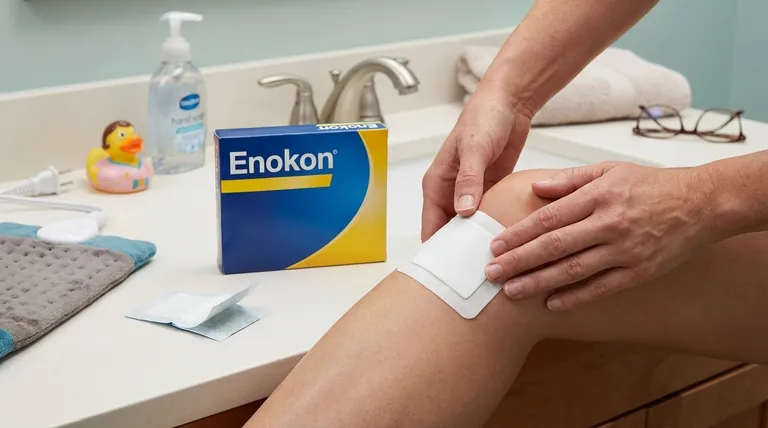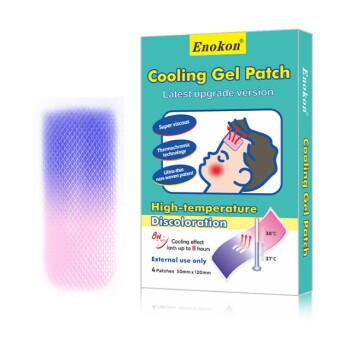When using topical lidocaine, precautions are essential to ensure safety and effectiveness. Key measures include avoiding application on broken or irritated skin, keeping it away from children, and preventing contact with eyes. Patches should be applied to intact skin, kept dry, and disposed of properly. Heat sources near application sites should be avoided to prevent increased absorption. Hands must be washed after use, and healthcare providers should be consulted if symptoms persist or worsen. Following these guidelines minimizes risks like irritation, systemic absorption, or accidental ingestion.

Key Points Explained:
-
Application on Intact Skin Only
- Topical lidocaine should never be applied to broken, burned, or irritated skin, as this increases systemic absorption and the risk of side effects.
- Patches must adhere to clean, dry skin, avoiding areas prone to friction (e.g., under tight clothing).
-
Avoiding Sensitive Areas
- Contact with eyes, mucous membranes (e.g., inside the rectum), or face (for sprays) must be prevented to avoid irritation or unintended absorption.
- For hemorrhoids or sore throats, use only formulations specifically designed for these areas.
-
Child Safety and Accidental Exposure
- Keep products out of reach of children, as ingestion can lead to serious toxicity (e.g., methemoglobinemia).
- Never use lidocaine for teething pain in infants due to fatal overdose risks.
-
Proper Patch Use and Disposal
- Patches should be applied as directed (e.g., Ztlido tolerates limited water exposure, others must stay dry).
- Fold used patches sticky-side together before disposal to prevent accidental contact by children or pets.
-
Avoiding Heat and Occlusion
- Heat (e.g., heating pads) or tight bandages over application sites can increase absorption, raising toxicity risks.
-
Hygiene and Monitoring
- Wash hands after application to prevent transfer to other body parts or people.
- Discontinue use and consult a healthcare provider if irritation occurs or pain persists beyond 7 days.
-
Formulation-Specific Precautions
- Sprays: Avoid inhalation or facial application.
- Patches: Never cut or reuse damaged patches, as this alters dosage.
By adhering to these precautions, users can safely benefit from lidocaine’s localized pain relief while minimizing risks. Have you considered how these measures align with your specific use case?
Summary Table:
| Precaution | Key Action | Reason |
|---|---|---|
| Intact Skin Only | Apply to clean, dry, unbroken skin; avoid irritated or damaged areas. | Prevents systemic absorption and side effects. |
| Avoid Sensitive Areas | Keep away from eyes, mucous membranes, and face (for sprays). | Reduces risk of irritation or unintended absorption. |
| Child Safety | Store out of reach; never use for teething pain in infants. | Prevents accidental ingestion or fatal overdose. |
| Patch Use & Disposal | Fold used patches sticky-side together before disposal. | Minimizes accidental contact by children or pets. |
| Avoid Heat/Occlusion | Do not apply heat or tight bandages over application sites. | Prevents increased absorption and toxicity. |
| Hygiene & Monitoring | Wash hands after use; consult a provider if irritation persists. | Ensures safe transfer and timely medical intervention. |
| Formulation-Specific | Follow instructions for sprays (no inhalation) and patches (no cutting). | Maintains proper dosage and safety. |
Ensure safe and effective pain relief with expert guidance!
At Enokon, we specialize in bulk manufacturing of reliable transdermal patches and pain plasters for healthcare and pharma distributors. Our technical expertise ensures custom R&D and development tailored to your needs.
Contact us today to discuss how our solutions can support your product line with safety and precision.
Visual Guide

Related Products
- Lidocaine Hydrogel Pain Relief Patch for Pain Relief
- Heating Pain Relief Patches for Menstrual Cramps
- Far Infrared Deep Heat Relief Patches Medicated Pain Relief Patches
- Far Infrared Heat Pain Relief Patches Transdermal Patches
- Natural Herbal Wormwood Patch Pain Plaster
People Also Ask
- For what condition are lidocaine patches approved in the United Kingdom? A Guide to Postherpetic Neuralgia Treatment
- How is the lidocaine patch administered? A Step-by-Step Guide for Safe & Effective Pain Relief
- How does the lidocaine patch work? Targeted Relief for Nerve Pain Explained
- How can you use lidocaine patches for multiple sore spots? A Guide to Safe, Effective Pain Relief
- Is it safe to use lidocaine patches while breastfeeding? Expert Guidance for Nursing Mothers
















